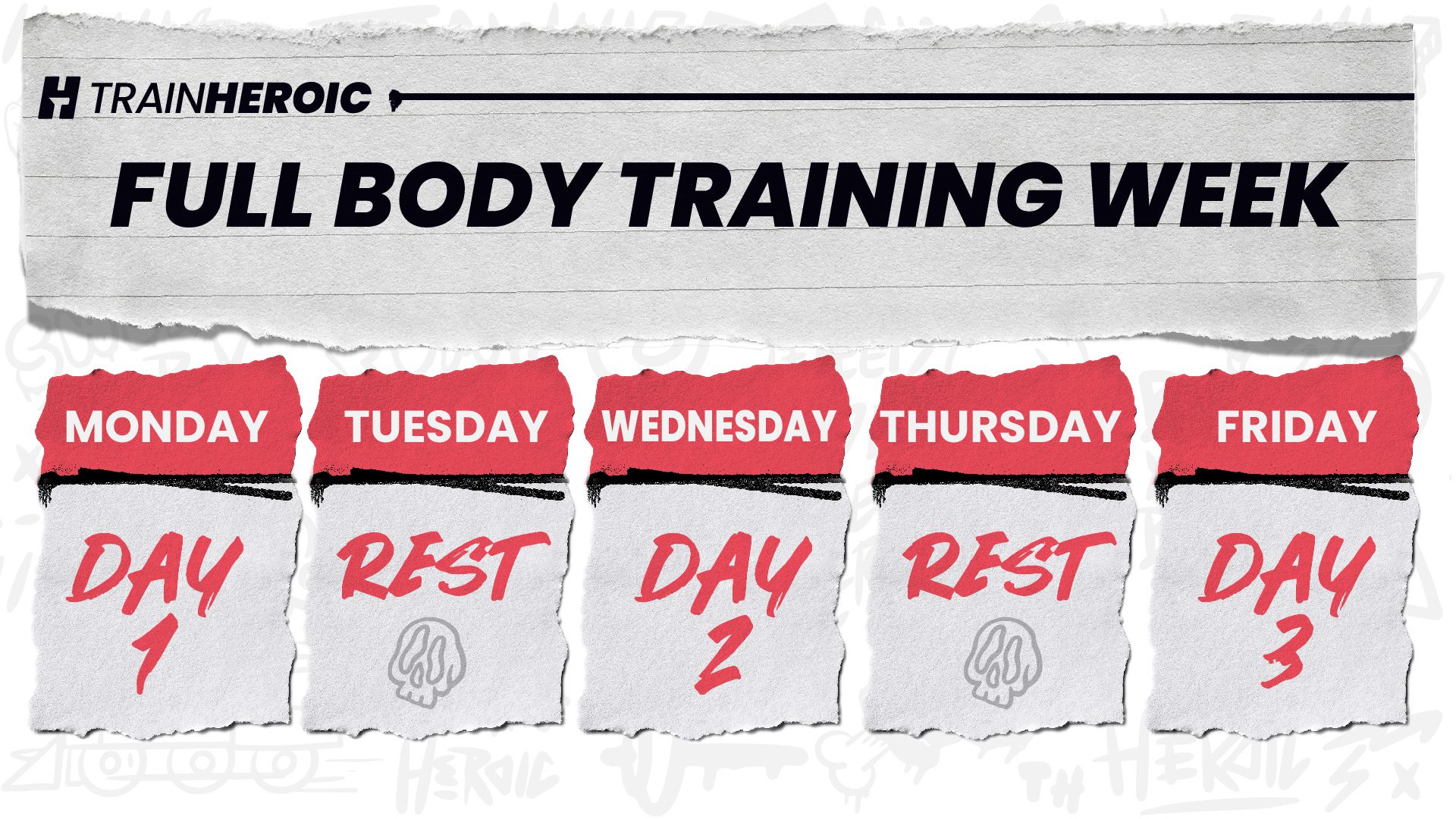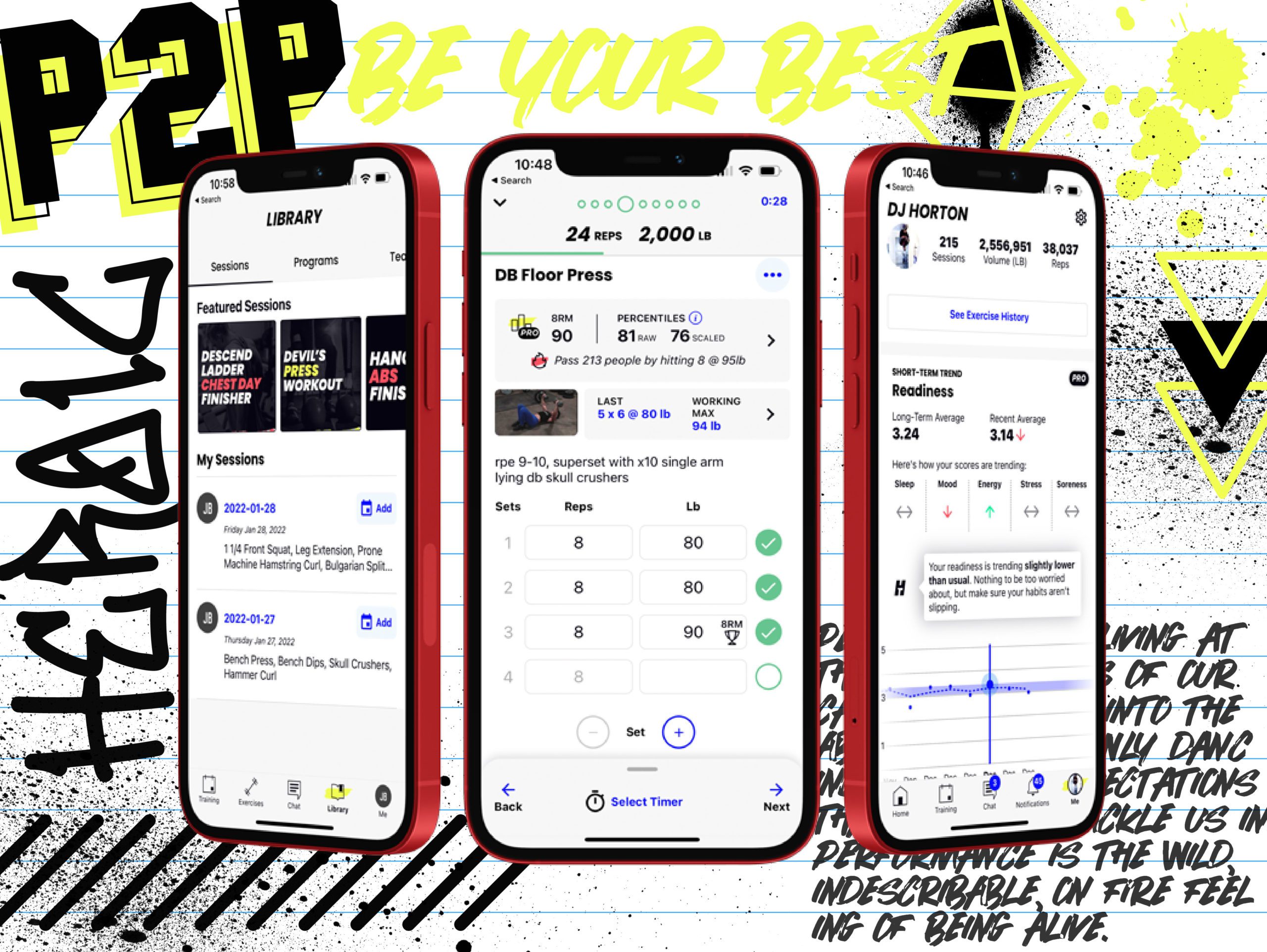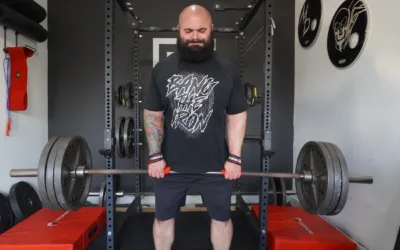The Best Strength Training Split if You Have No Time

“I’m too busy” is the oldest excuse in the book. The reason it works so well is because it’s a totally valid excuse for those of us with active lives—careers, families, hobbies, the works. But you know better. You know there’s a way to prioritize strength training within the chaotic network of your responsibilities, if only you had a plan to optimize your time. Corey Hobbs is here for it. He lives the lifestyle as a driven trainer, dad, and strength athlete. Read his article about life stress vs. training stress, fitness fatigue, recovery, and how to maximize your time while getting the most out of your workouts. He even offers a sample training week split and exercises for your full-body workouts.


High-Stress Athletes: This One’s for You
This is it. You’ve got your gym membership dialed in or your garage gym finally set up. You’re committed to reaping the health benefits of strength training. But where the heck do you start? If you’re like me (and most people), you’re super busy. You can’t be spending hours on end with the weights 6-7 days a week. Some people can do that, and that’s great for them. But you and me? We’ve got family, work obligations, and oh yeah, we’d like some down time too, please.
Is it even possible to fit strength training into our busy schedules?
Absolutely.
Enter the full-body training split. This approach is all about maximizing your time spent in the gym for higher returns on that time investment. Just three full-body workouts a week will allow you to make leaps and bounds towards your goals while still giving you time to be successful in the other important areas of your life. If you do it right.
Why is this kind of training the best approach?
Understanding Fitness Fatigue
Strength training is all about applying the right amount of stress to the body. We need enough stress to get a response—muscle growth, endurance adaptation, motor control development—but too much stress leads to fitness fatigue. Fitness fatigue is the natural evolution of General Adaptation Syndrome (GAS) first identified by Hans Selye. Essentially, the dose makes the poison.
It’s important to remember that the body can’t differentiate between different stressors. To your body, the stress response of running for your life on the tundra looks exactly like the stress over missing a deadline or having a tough meeting with your boss.
The effects of various stressors are also cumulative. They compound on each other such that stress from our workouts isn’t differentiated from the stress of our workplace or family lives.
You have internal constraints you can’t escape in terms of intensity (how much weight you lift) and volume (total number of sets and reps). But outside stressors like lack of sleep, work schedule, nutrition, etc influence these constraints. Stress is cumulative.
One thing we can control around those constraints is the number of times per week we workout. If you live a high-stress life with outside demands on your time, training your whole body three days a week is all you really need. This approach gives you plenty of time to recover between workouts while still allowing you time to recover and perform well in your life away from the weights.
Let’s look at how to set this up.
You Work too Hard to Not See Progress
Find Your Perfect Training Plan
Options for Every Goal
Training plans from real coaches covering any goal, fitness level, and number of sessions per week.
The Best Coaches
Get coached by the best. Olympians, ex-NFL stars, Titan Games Winners, Sport Scientists and more.
Starting at $1/ day
With many options including a free 7 day trial, you can try out programming before you commit.
Sample Full-Body Training Week


I gotta give credit to the crew at Allegiate Gym who first introduced me to this graphic. It clearly defines the basic layout of a recommended training split for busy people.
But the days you set it up are completely up to you. There’s no reason you couldn’t start on a Sunday and go through Thursday. This is our baseline week of training with each of the workouts being full-body workouts. To get even more return on your time, use supersets. An example day within this week might look like the following:
Warmup
A1) Front Foot Elevated Split Squat 4×8
A2) Chest Supported Dumbbell Row 4×8
B1) Dumbbell RDL 3×12
B2) Single Arm Landmine Overhead Press 3×12
Cool Down
That entire session should be wrapped up in about 45-60 minutes.
The workouts are done in groups (A or B) with 1 followed by 2 repeated until all sets are complete. When selecting your supersets, a good strategy is to pair the opposite part of the body (upper or lower) with the opposite movement (push or pull). This way you don’t have to take up a ton of space in your gym, but you can still accomplish plenty of work in a shorter period of time.
You’ll want to change things up every 4 weeks or so by adjusting or increasing sets, reps, and tempo.


Level Up Your Training
With TrainHeroic’s immersive training app
TrainHeroic does everything you wish your old gym notebook could do.
Take the guesswork out of training with built-in exercise instruction and basic training programs. Compete against yourself and others. Track your performance and readiness. Smash your goals.


Rest Days
What should you do on rest days? Get outside, go for long walks, bike rides, yoga, swim sessions—get your cardio in. Arguably these are things we should be doing every day, but for busy people, they’re essential in prepping your body for the next workout.
The whole point of this approach is to give you your time back!
You can get a little creative with rest days, just do some form of movement. Maybe find ways to include your family like bringing them along on your walk or ride.
At the end of the day, we’re limited by our ability to recover between workouts. The 3 workout week outlined above sets your baseline. If you find you’re having no issues recovering between sessions, experiment by adding in more training frequency. Try four days of strength training, just avoid adding extra work on your rest days.
Use your rest days for stretching, foam rolling or soft tissue tissue work, and stick to the plan. More is not always better. Better is better.
What should you do if your schedule doesn’t allow for a rest day in between? On the two days you train back-to-back, make the first day an upper body only day, then train your lower body on the second day. Upper body movements are somewhat less demanding on the nervous system. So, you should still be ready to go for your lower body day afterwards.
If you can only do two days a week, the same general rules apply. Aim for full-body sessions except on those back-to-back days. Split those into upper body and lower body.
The goal here is not to cram in as much as you can. Instead, we’re trying to find the least amount you can do while still getting the results you want.


Most people I train are shocked when we start with three days a week. We’ve all been told that we need to spend hours on end in the gym to get results and if we don’t, we obviously don’t care about our health.
That couldn’t be further from the truth. There’s so much progress to be had in taking this approach. If you’re stuck trying to fit strength training into your busy life, give the three day per week full-body workout split a try. It offers plenty of time to get the results you want while banishing the excuse “I’m too busy.”
Want Training Tips, Exercise Guides & Knowledge Bombs Sent to Your Inbox?
Sign up for the FitNerd newsletter from TrainHeroic
Related articles
Branding for Strength Coaches Part 2: Getting Started in the TrainHeroic Marketplace
When it comes to selling your programs as a strength coach, standing out is key. A well-crafted profile on the TrainHeroic marketplace not only helps potential clients find you but also establishes trust and shows off your uniqueness. In Part 1 of this series, we...
Winter Warfare: How to Bulk Up This Season
It’s that time of the year to wreak havoc and prepare for a massive winter bulk! But wait, what is a winter bulk? What does it take, and how do we achieve it? Joseph Lucero (CSCS), owner of Harvesting Strength, is a powerlifter and strongman coach with years of...
8 of the Best Hamstring Exercises for Meaty Legs
Your hamstrings are not just for decoration or making yoga feel impossible. They’re essential for basically any athletic movement involving your legs—jumping, running, lunging, squatting, and picking up weight. Add these eight killer hamstring exercises into your...


Join the community
Sign up for the latest training news and updates from TrainHeroic


About TrainHeroic
Support
Made with love, sweat, protein isolate and hard work in Denver, CO
© 2021 TrainHeroic, Inc. All rights reserved.






